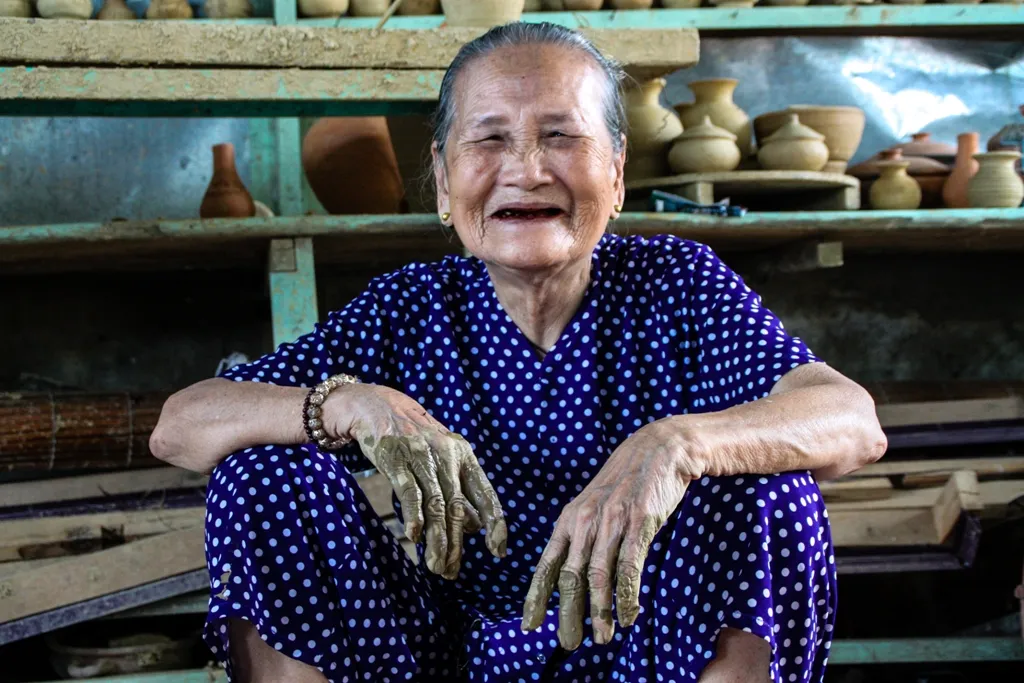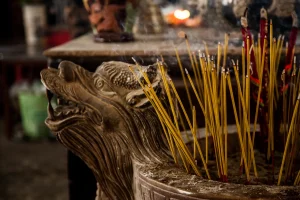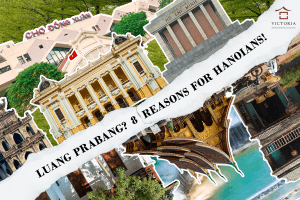Situated on the maritime Silk Road, with Japanese, Chinese, Dutch, and Indian merchants in the 16th to 18th centuries ready to bring Hoi An’s silks and spices to distant lands, it’s little wonder that the port town attracted its fair share of skill artisans. Some of that tradition has survived through the ages in the little single-craft villages that surround present-day Hoi An.
Among them is the pottery village of Thanh Ha, just off one of the tributaries of the Thu Bon River.
We descend from our boat and walk through the peaceful village, stopping at the home of Mrs. Phu, where the 92-year-old woman and her grandchildren and great-grandchildren are carrying on the pottery legacy of their ancestors.

One of her grandchildren sits at the potter’s wheel, steady hands molding a lump of clay into a vase. Nothing here is mechanized. A helper stands to the side and with deft kicks, spins the wheel with a rhythmic motion.
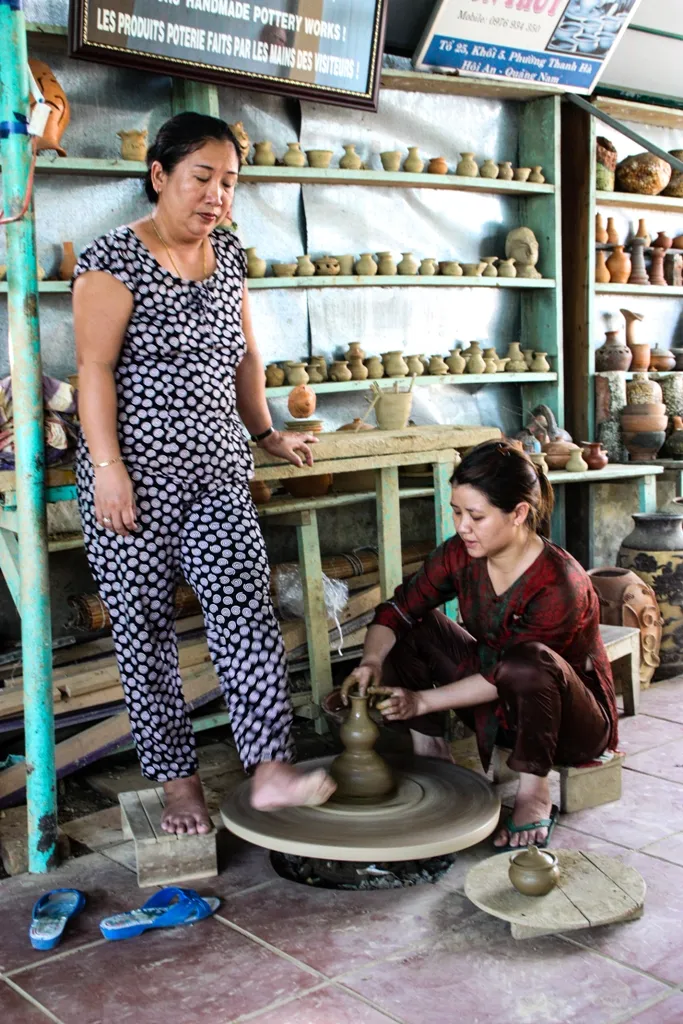
Soon, all sorts of pots and vases take shape. Originally, the clay used was from Hoi An itself – from the river beds and from the rice paddy fields. Farmers would take away the clay in order to level their fields, making them easier to irrigate. Now, the clay comes from Quang Nam, about 10-15 km from Hoi An.
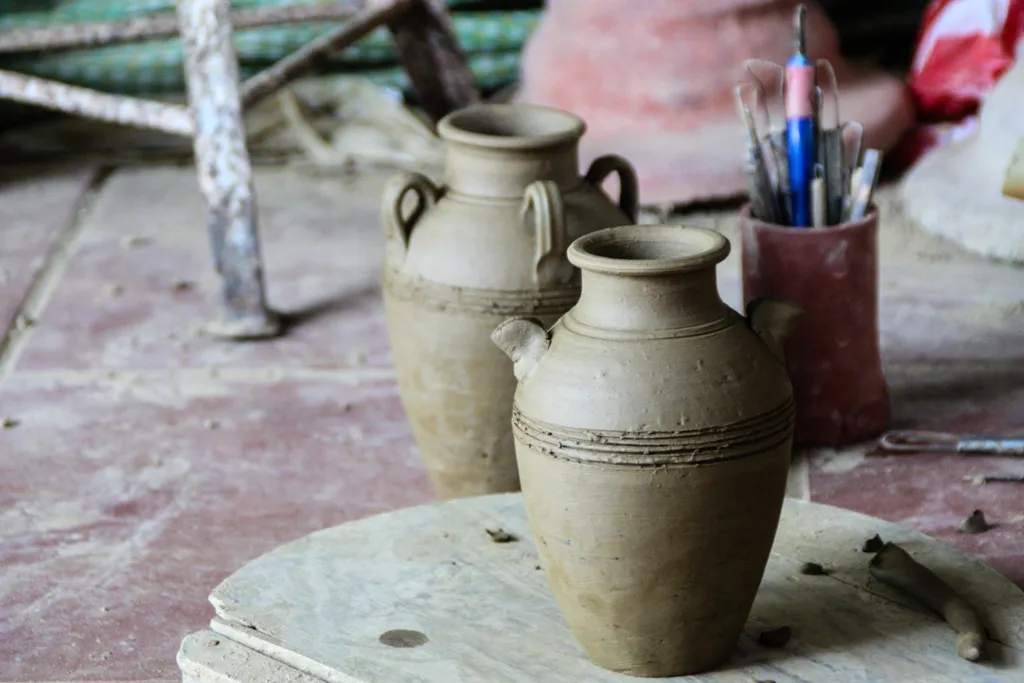
Soon, Mrs. Phu rises from her midday nap and joins us in the workshop. She’s dressed in bright blue polka-dotted pajamas, hair tied neatly in a bun. She has a little trouble hearing but her speech is clear. Although she was born in Hoi An, her ancestors came from Thanh Hoa in the north, and she retained the northern habit of chewing betel nut, as evidenced by her stained black teeth every time she flashes a smile, which is often.
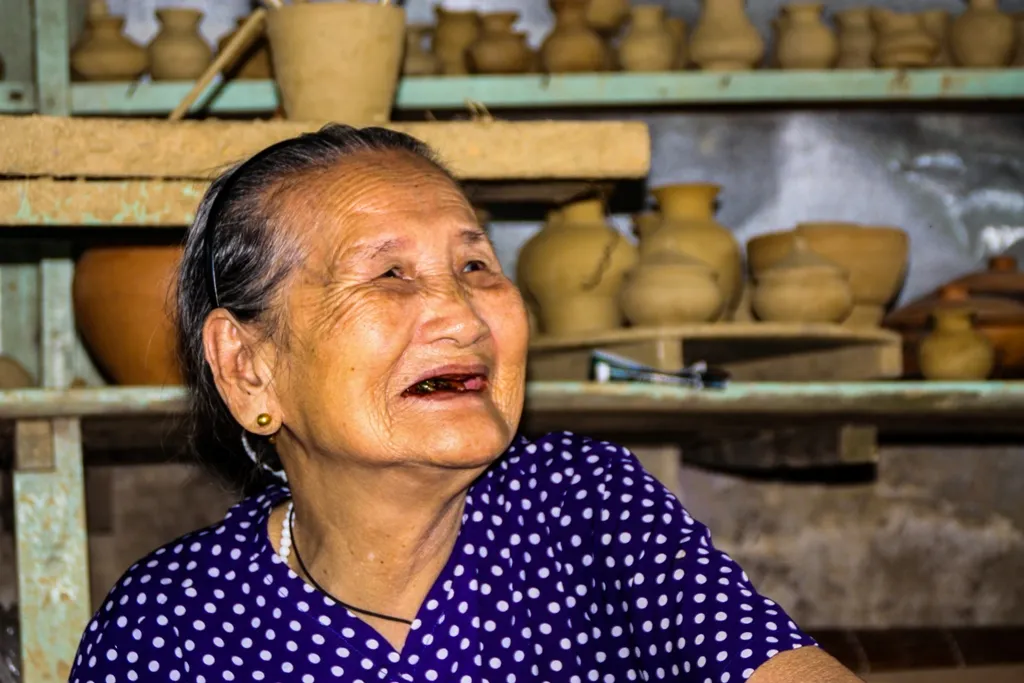
She shuffles around the workshop, bent over but with a steady gait. Once she sits down at the wheel, though, decades of experience take over and her hands are firm and steady, molding the moist clay at will. Within minutes, she’s made several small pots and vases, much to our amazement.
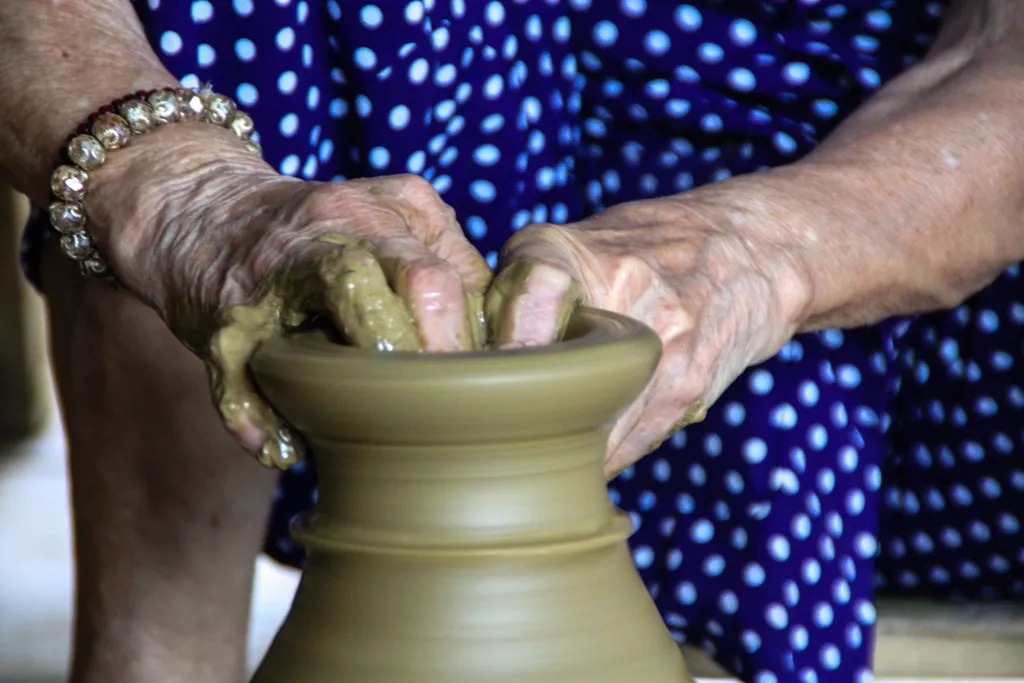
“I was born in 1923 right here in Hoi An,” she says. “This village was founded by three people from Thanh Hoa, in Vietnam’s north, in the 16th century. Our family has been making pottery for six generations now. I come from a big family, 10 brothers and sisters. I’m the only one still alive. My husband died 30 years ago. I’ve also outlived my three children who died in the war.”
She speaks of her childhood, in a Hoi An unrecognizable from today’s quaint but modern Ancient Town with chic boutiques and trendy cafes. “The Hoi An of my childhood is nothing like the Hoi An of today. When it rained, it flooded. I remember wading through the mud up to my knees on the way to school. I guess it wasn’t really a school. Because all the kids worked with their parents during the day, we went to a tutor at night, learning by oil lamp. I don’t have any pictures of my childhood; no one had a camera. Hoi An was a poor, countryside town back then. My family made pottery, simple things for home use: big water urns, bowls, lamps and the like.”
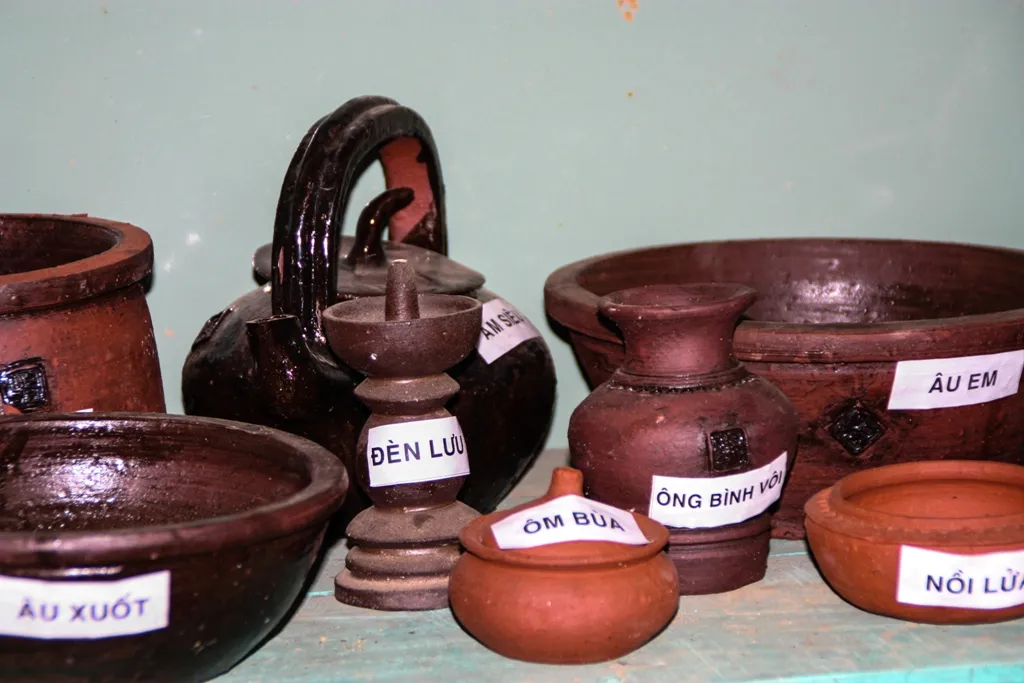
“I was 13 when my mom taught me how to make pottery. I was glad to help because I could see her working so hard to take care of all of us. They’d work all during the day and into the night, churning out a hundred pots a day. The women made the pottery while the men looked after the heavier work of cutting the wood, loading the kilns, preparing the clay… ”
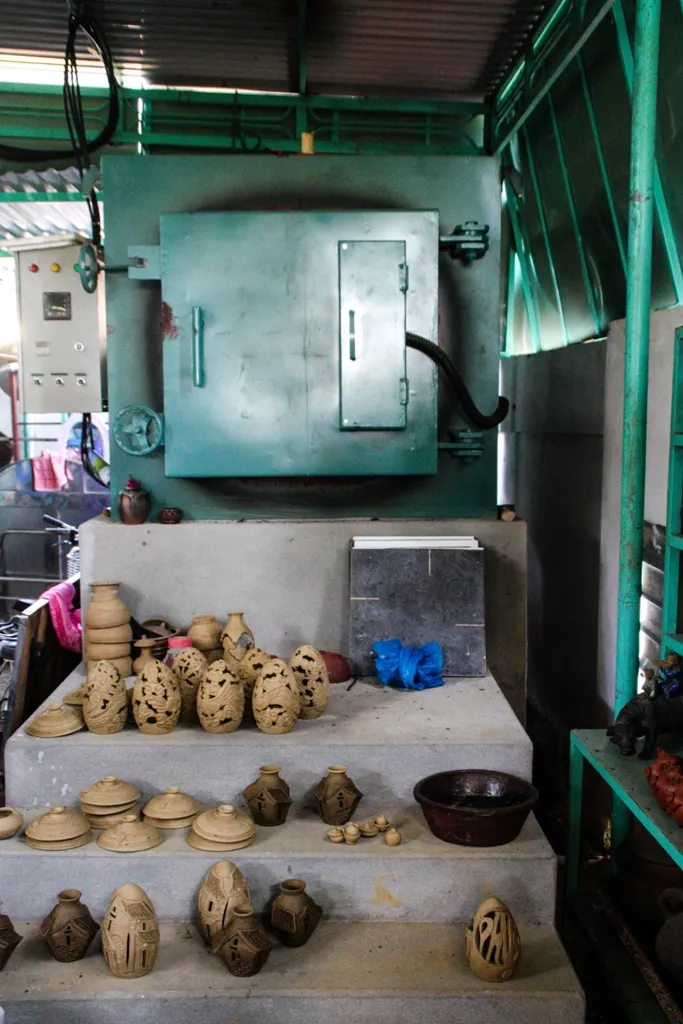
Hoi An’s tourist boom has helped save her traditional livelihood. While large, heavy clay urns used for washing or holding water have been replaced by aluminum and plastic, the family has changed with the times, producing smaller, decorative pieces.
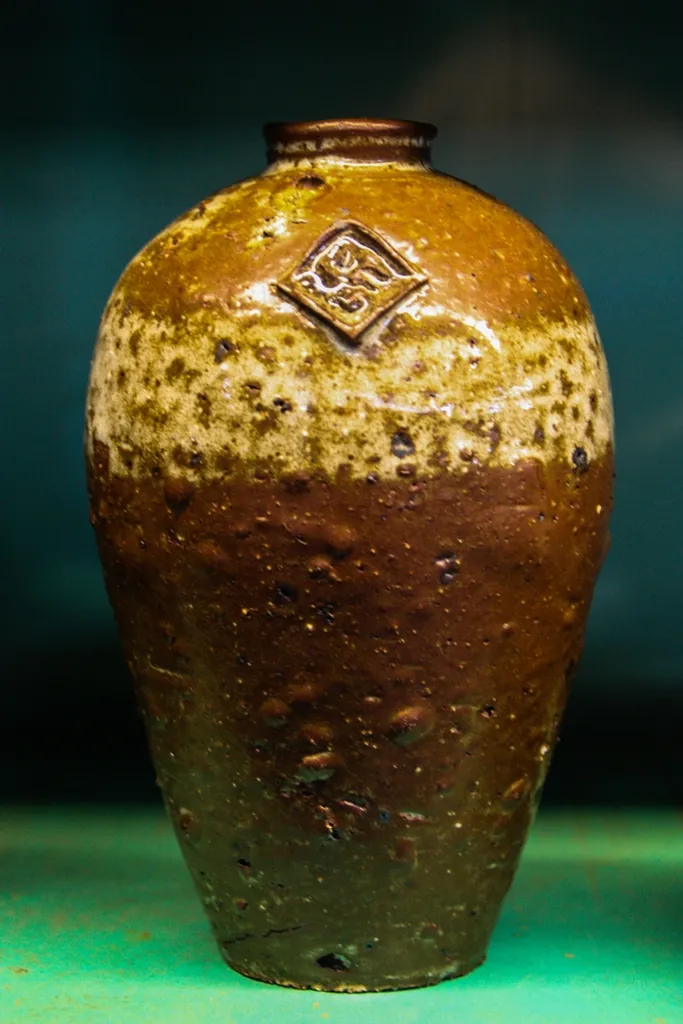
The traditional methods are still being used, and the pottery bearing the family’s seal is known for being practically unbreakable. One of the women stands on top of one to demonstrate its strength – the exactly method used remains a closely guarded family secret.
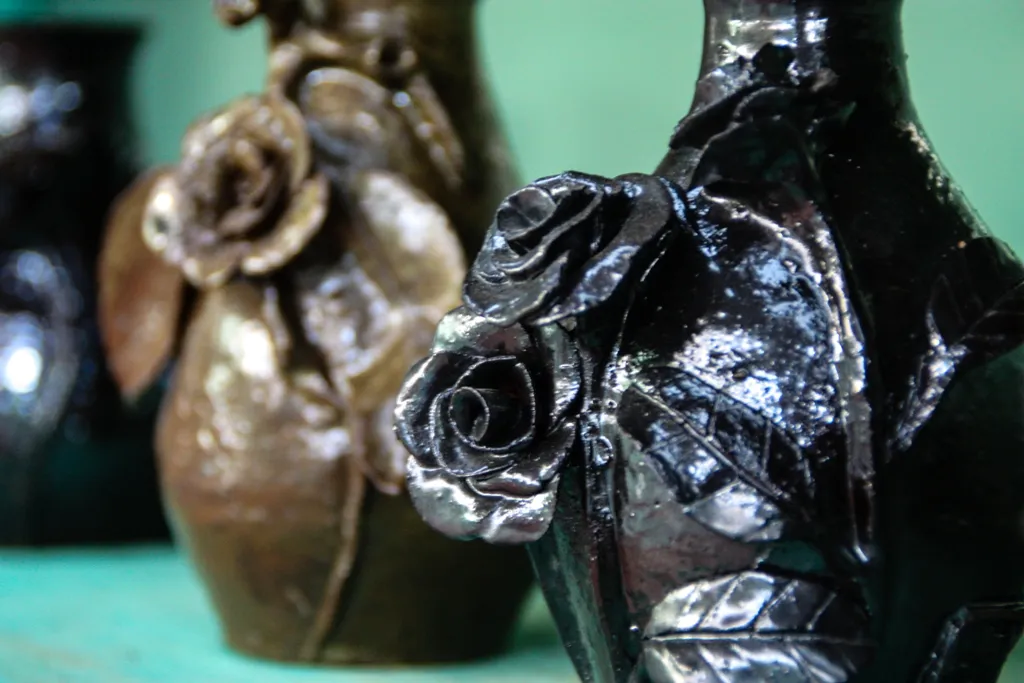
In the community, Mrs. Phu is somewhat of a celebrity. It’s not every day you see a nonagenarian still working. The afternoon we visit, a local television crew from Danang is there to film Mrs. Phu at work and she shows off a wide toothsome grin like the old pro that she is.
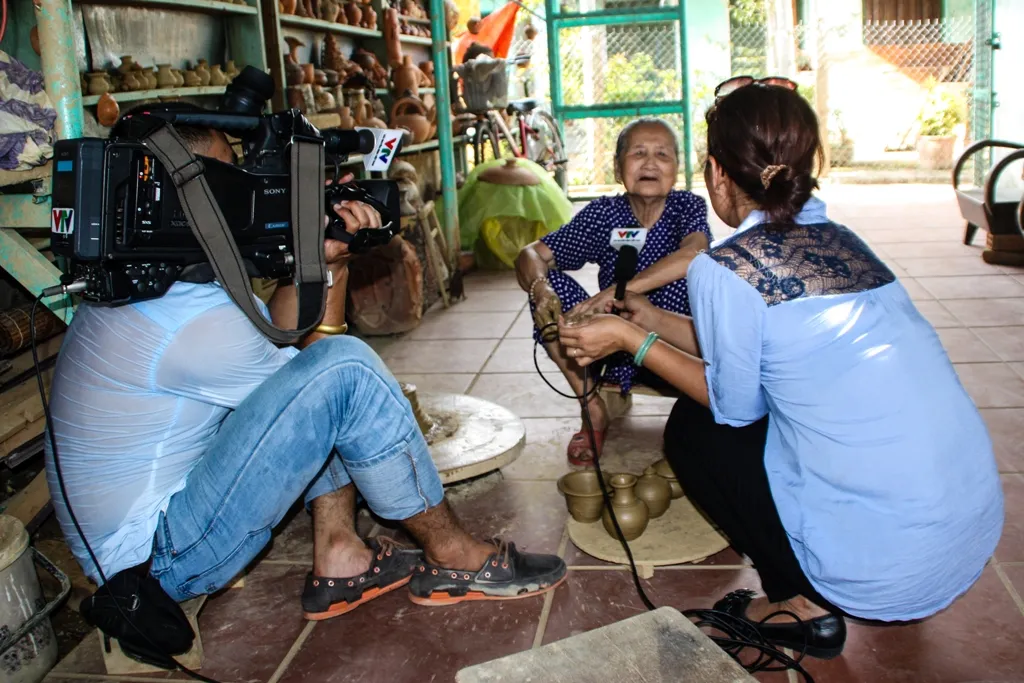
“I can’t imagine not making pottery,” she tells the TV crew. “It’s what has clothed and fed our family for many generations. It hasn’t made us rich. I’ve never been to Saigon or Hanoi. The furthest I’ve been is Da Nang to visit relatives. We’re not rich, we’re not poor, but our family is together.”
The Thanh Ha Pottery Village is one of the river excursions arranged through the Victoria Hoi An Beach Resort & Spa, ideally situated with the Cua Dai Beach on one side and the Thu Bon River on the other, just 10 minutes via shuttle bus from the Ancient Town of Hoi An.
